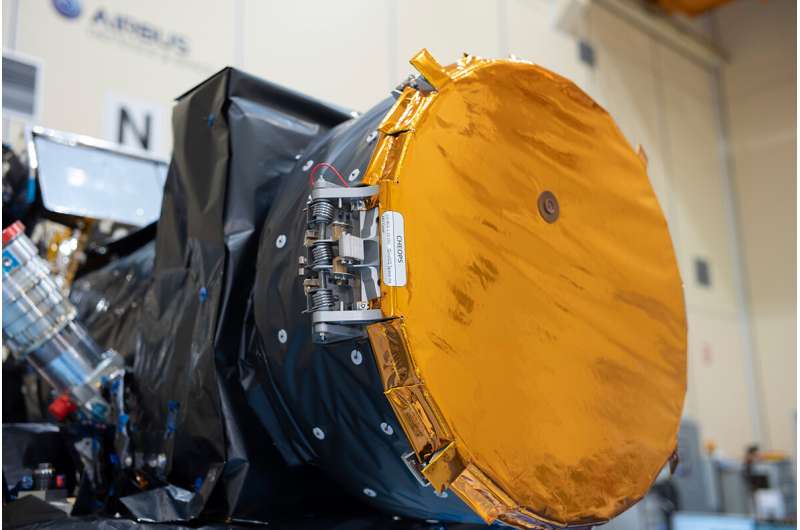Cheops in the clean room at Airbus, Madrid. Credit: ESA – S. Corvaja
"Shortly after the launch on December 18, 2019, we tested the communication with the satellite. Then, on January 8, 2020, we started the commissioning, that is, we booted the computer, carried out tests, and started up all the components," explains Willy Benz, professor of astrophysics at the University of Bern and Principal Investigator of the CHEOPS mission. All the tests went outstandingly well, he says. "However, we were now looking forward excitedly and with a bit of nervousness to the next decisive step: the opening of the CHEOPS cover," continues Benz.
At 7:38 am on Wednesday, January 29, 2020, the moment had arrived. The Mission Operation Center (MOC) at the Instituto Nacional de Técnica Aeroespacial (INTA), near Madrid, Spain, gave the command to open the CHEOPS cover. "The cover was opened by sending electricity to heat an element which held the cover closed. The heat deformed this element and the cover sprung open. A retaining fixture caught the cover," explains Benz. "Thanks to the measurements of the sensors installed, we knew within minutes that everything had worked as planned," Benz continues.
First images to be published in one to two weeks
The successful opening of the cover marks the beginning of a series of new activities. "In the next two months, many stars with and without planets will be targeted in order to examine the measurement accuracy of CHEOPS under different conditions," Benz explains. In addition, these activities allow training all aspects of the ground segment—the Science Operations Center at the observatory of the University of Geneva—with a view to the beginning of the regular science operation phase.
"The raw data of CHEOPS are being processed in the so-called data reduction pipeline," says David Ehrenreich, CHEOPS project scientist at the University of Geneva. CHEOPS has already produced hundreds of images; although these were completely black because the cover was still closed, they have helped the team to calibrate the instrument. Ehrenreich explains: "The complete assessment of the abilities of CHEOPS and the ground segment will take some time. However, we expect to be able to analyze and publish the first images within one or two weeks."
Provided by University of Bern
























